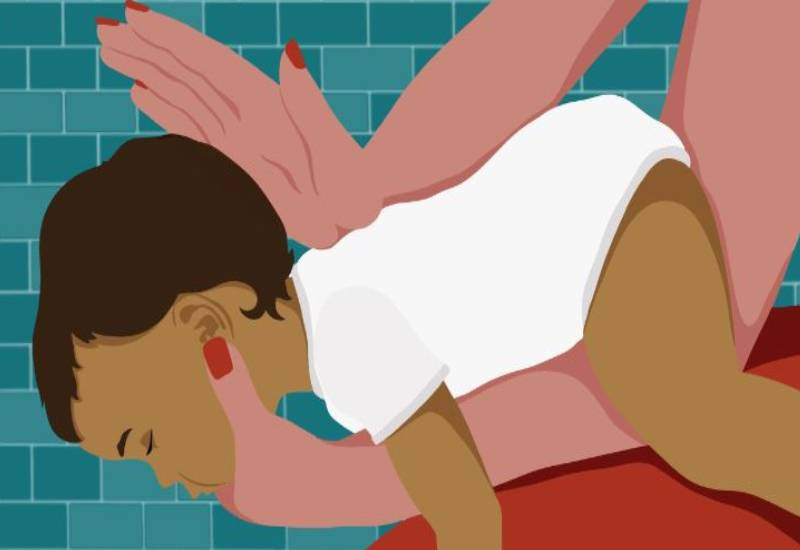
When Riziki's eight-day-old baby choked on milk, she went into panic mode. She describes the experience as horrifying and traumatising, trying to resuscitate her infant, who was unconscious at the time.
Riziki recalls breastfeeding her son, burping him, and putting him on his side to take a nap before heading to the washroom.
"After about 10 minutes, I heard a strange noise. My niece immediately came running to get me, saying that the baby was choking. I rushed to his rescue and found him lying on his back, struggling to breathe with his eyes wide open," said Riziki, adding that she was in a state of confusion trying to offer her son first aid.
"I immediately placed him on my lap (which she later stated was a mistake) and started performing back blows, gently hitting the back between shoulder blades with the heel of the hand."
Despite her attempts, Riziki says her baby did not respond, which worried her even more. She called her paediatrician who advised her to "ensure the baby is placed face down for the obstruction to clear."
"I tried this and repeated the back blows two times, five reps each, until he finally coughed the milk out. I then soothed him by rubbing his back gently while on a rocking chair," said Riziki.
Motherhood never came with a manual, although sometimes we wish it did to make the journey less daunting. Like Riziki, many mothers find themselves in a quagmire whenever their child chokes and as they try to administer first aid.
When a baby chokes, its airway is partly or completely blocked, meaning that it may be unable to breathe properly. Babies at the weaning off stage are particularly at risk of choking as they begin eating solid food or when playing with smaller objects such as marbles or coins.
However, newborn babies can choke from breast milk or formula, their mucus, or vomit. According to Healthline, the most common reason a baby chokes during breastfeeding is that milk is coming out faster than your baby can swallow. And despite choking in young babies being normal from time to time, parents are warned that frequent occurrences could be a cause for concern.

A survey by St John Ambulance showed that 40 per cent of parents have witnessed their baby choke, yet over 80 per cent of these parents had no idea what to do in such a situation.
No parent raises their child, to imagine any harm coming to them. Still, it is our responsibility to ensure we get the basic knowledge of what to do should our young ones get in any danger and, in this instance, what to do when your baby chokes.
Before we get to that, how do you know if your baby is choking?
Some parents get alarmed when their babies gag, often mistaken for choking. However, gagging is a safety mechanism designed to prevent choking and is a normal reflex in babies as they learn how to take in solids and liquids.
Gagging presents signs such as watery eyes, retching movements, or even vomiting and tongue hanging out of the mouth, caused by an overload of food or a dislike of the taste of food.
But choking is different and can be dangerous to your young one - who cannot only communicate but also help themselves in such a situation - which entirely leaves it to the parent or caregiver to identify the signs and take the necessary steps to help.
To perform 'back blows', hold the baby face-down along your thigh with their head lower than their bottom. Then, hit them firmly on their back between the shoulder blades up to five times.
According to RedCross, back blows create a strong vibration and pressure in the airway, which is often enough to dislodge the blockage, allowing them to breathe again.
If that does not work, Stanford Children's Health recommends turning them on their back so that the head is lower than the chest. After that, place two fingers in the middle of the baby's breast bone, just below the nipples, then press inward rapidly about five times. The chest thrusts squeeze the air out of the baby's lungs and may dislodge the blockage.
While doing this, parents are warned against putting their fingers into the baby's mouth to try and induce vomit unless they spot the object within safe reach. Inserting your fingers into the baby's mouth might push the choking object farther into the airway. Also, caregivers are advised to call an ambulance or rush the baby to the hospital should it lose consciousness.
 The Standard Group Plc is a multi-media organization with investments in media platforms spanning newspaper print
operations, television, radio broadcasting, digital and online services. The Standard Group is recognized as a
leading multi-media house in Kenya with a key influence in matters of national and international interest.
The Standard Group Plc is a multi-media organization with investments in media platforms spanning newspaper print
operations, television, radio broadcasting, digital and online services. The Standard Group is recognized as a
leading multi-media house in Kenya with a key influence in matters of national and international interest.

